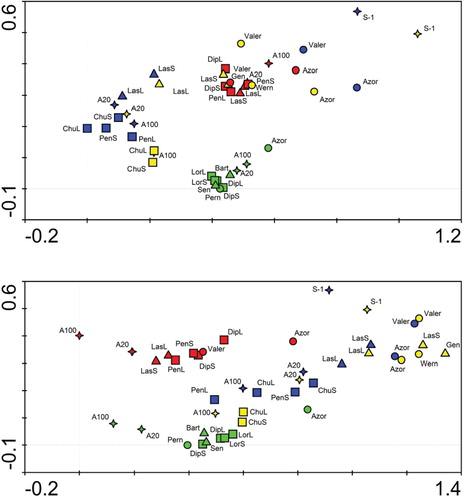Figures & data
FIGURE 1. Vertical profiles constructed from mean temperature (dotted vertical line), mean day/night temperature (dashed vertical lines), and mean daily minimum/maximum temperature (solid vertical lines) for the period July–August 2007; WH—upper left, WL—lower left, EH—upper right, EL—lower right. Due to damage of soil sensors at EL and EH during July–August 2007, data are presented for the period July–August 2008 for them. Horizontal lines show ranges of temperatures experienced by plants; symbols on each line are, from left to right: absolute minimum, mean daily minimum, mean, mean daily maximum, absolute maximum; squares are shrubs, triangles are erect herbs, circles are cushions, acaulescent plants, and prostrate subshrubs; open symbols are stems, filled symbols are leaves.

FIGURE 2. Mean cooling rates during the night (blue) and mean warming rates during the day (red) of air (star), soil (cross), and plants at WH (upper left), WL (lower left), EH (upper right), and EL (lower right); squares are shrubs; triangles are erect herbs; circles are cushion plants, acaulescent plants, and prostrate subshrubs.
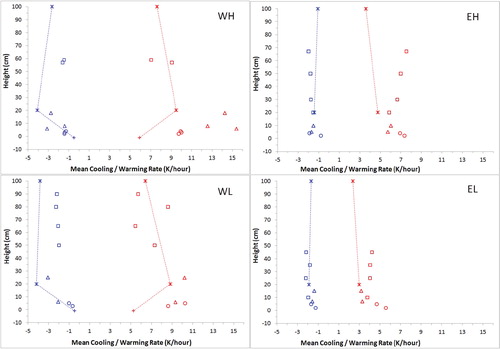
FIGURE 3. Detrended Correspondence Analysis (DCA) ordination diagram based on frequencies of temperature values and temperature changes indicates relationships among air, soil, and plant temperature variables within and between the sites; λ1 = 0.144, λ2 = 0.038, total inertia = 0.272; the grouping boundaries generated by the first Twinspan clustering step are superimposed on the diagram. Squares are shrubs; triangles are erect herbs; circles are cushion plants, acaulescent plants, and prostrate subshrubs. Blue—WL, yellow—WH, red—EL, green—EH. S and L after plant abbreviations refer to stem and leaf, respectively.
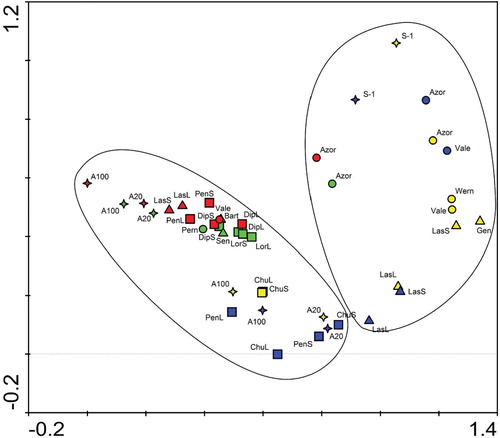
FIGURE 4. Mean plant temperatures plotted against height above ground (x-axis in logarithmic scale) demonstrate differences in the vertical temperature profile among the sites during the night (left) and day (right). Squares are western sites, circles are eastern sites, black are low elevation sites, white are high elevation sites. Significance level for the tests of day slopes (Mean Day Temperature) being different from zero are: p < 0.01 for WL and WH, p = 0.07 for EL, and p = 0.58 for EH.

TABLE 1 List of studied species along with their growth form classification (according to CitationHedberg and Hedberg, 1979; CitationRamsay, 2001), occurrence at the sites, and measured leaf areas. See text for site abbreviations.
TABLE A1 Summary table of air, soil, and plant temperatures measured in 5 min intervals during July–August 2007; night means and day means were calculated for the periods 7:00 p.m. to 6:00 a.m. and 7:00 a.m. to 6:00 p.m., respectively.
Table
TABLE A2 Pearson correlation coefficients between plant mean cooling rates and plant mean night minimum temperatures and between their mean warming rates and mean day maximum temperatures. See text for site abbreviations.
FIGURE A1. Daily course of mean air and mean soil temperatures measured during the period August 2007–July 2009 at WH (n = 460 days), WL (n = 720 days), EH (n = 170 to 277 days), and EL (n = 510 days). Square—air 100 cm, triangle—air 20 cm, circle—soil -1 cm, diamond—soil -10 cm. Presented are hourly means; dotted horizontal lines indicate 0 °C.
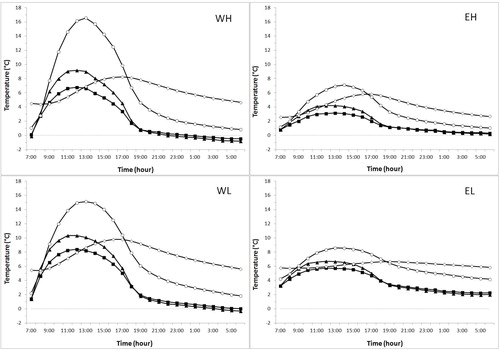
FIGURE A2. Seasonal course of mean daily minimum and mean daily maximum of air and soil temperatures at WH (upper left; n = 17 months between August 2007 and January 2009), WL (lower left; n = 23 months between October 2007 and August 2009), EH (upper right; n = 7 months between November 2007 and February 2008 and between July and October 2008), EL (lower right; n = 11 months between September 2008 and July 2009). Dotted horizontal line indicates 0 °C. The July–August 2007 period is presented in bold as 1-hour means (in contrast to 5-minute data in ) to be consistent with the August 2007–July 2009 data. The outlying profile showing lower means for WL daily maxima is that of August 2009, and the two outlying profiles showing higher means for EL daily maxima are those of December 2008 and January 2009.
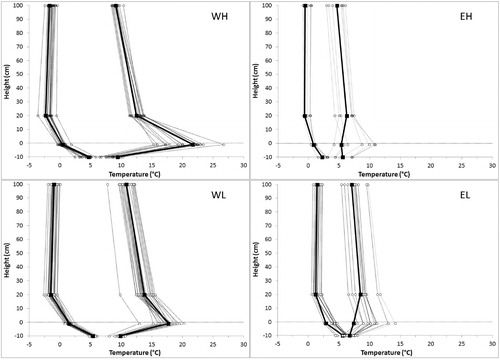
FIGURE A3. Mean cooling (blue) and mean warming (red) rates plotted against mean length of continuous temperature change for WH (upper left), WL (lower left), EH (upper right), and EL (lower right). Square—sclerophyllous shrubs; triangle—erect herbs/subshrubs; circle—cushions, acaulescent rosettes, and prostrate subshrubs. Star—air, cross—soil.
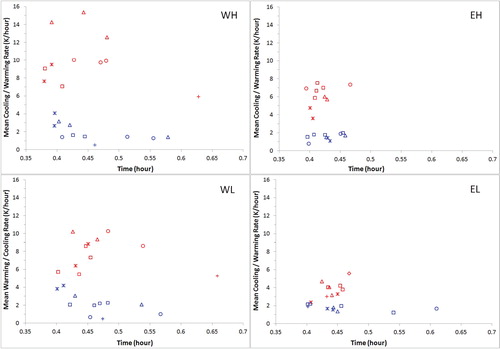
FIGURE A4. DCA ordination diagrams show relationships among temperature variables within and between sites; 2 and 3 DCA axes (above), 1 and 3 DCA axes (below); λ1 = 0.144, λ2 = 0.038, λ3 = 0.01, total inertia = 0.272. Squares are shrubs; triangles are erect herbs; circles are cushion plants, acaulescent plants, and prostrate subshrubs. Blue—WL, yellow—WH, red—EL, green—EH. S and L after plant abbreviations refer to stem and leaf, respectively.
